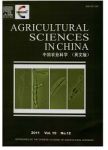Comparisons of Yield and Growth Behaviors of Hybrid Rice Under Different Nitrogen Management Methods in Tropical and Subtropical Environments
Comparisons of Yield and Growth Behaviors of Hybrid Rice Under Different Nitrogen Management Methods in Tropical and Subtropical Environments作者机构:College of Agronomy Hunan Agricultural University Crop Physiology and Production Center (CPPC) Huazhong Agricultural University
出 版 物:《Journal of Integrative Agriculture》 (农业科学学报(英文版))
年 卷 期:2013年第12卷第4期
页 面:621-629页
核心收录:
基 金:supported by the National Basic Research Program of China (2009CB118603) the Green Super Rice (GSR) Project from the International Rice Research Institute (IRRI) for South Asia Project was completed through the generous cooperation of Hunan Agricultural University, Changsha, Hunan, China the Bangladesh Rice Research Institute (BRRI)
主 题:crop growth rate biomass production hybrid rice leaf area duration leaf area index real-time nitrogenmanagement
摘 要:To compare the grain yield and growth behaviors of hybrid rice, field experiments were conducted in a subtropical environment in Changsha, Hunan Province, China, and in two tropical environments in Gazipur and Habiganj in Bangladesh during 2009 to 2011. Three hybrid rice cultivars were grown under three nitrogen (N) management treatments in each experiment. The results showed that grain yield was significantly affected by locations, N treatments and their interaction but not by cultivars. Changsha produced 8-58% higher grain yields than Bangladesh locations. Sink size (spikelet number per unit land area) was responsible for these yield differences. Larger panicle size (spikelet number per panicle) contributed to greater sink size in Changsha. Aboveground total biomass was greater in Changsha than in Bangladesh locations, whereas harvest index was higher in Bangladesh locations than in Changsha. Crop growth rate (CGR) was greater at Changsha than Bangladesh locations during vegetative phase, while the difference was relatively small and not consistent during the later growth phases. Higher leaf area index and leaf area duration were partly responsible for the greater CGR in Changsha. Real-time N management (RTNM) produced lower grain yields than fixed-time N management in more than half of the experiments. Our study suggested that further improvement in rice yield in the tropical environments similar to those of Bangladesh will depend mainly on the ability to increase panicle size as well as CGR during vegetative phase, and the chlorophyll meter threshold value used in RTNM needs to be modified according to environmental conditions and cultivar characteristics to achieve a desirable grain yield.



